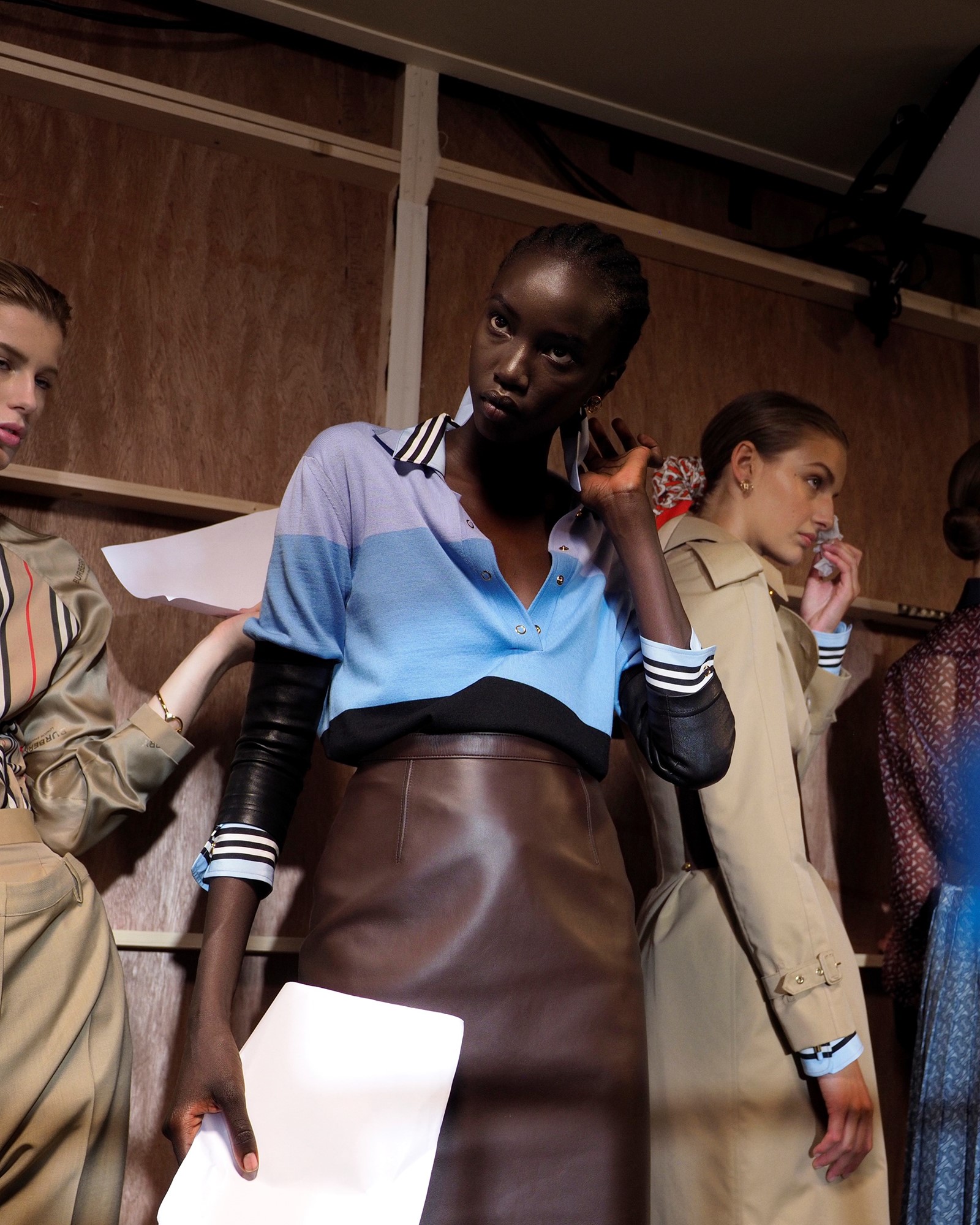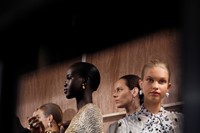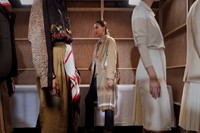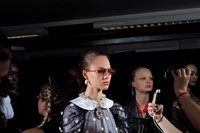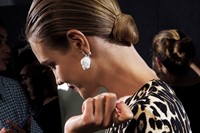Riccardo Tisci’s first Burberry show was guaranteed to be an event, before he had even shown a stitch of clothing. He engineered some of that himself – a logo redesign by Peter Saville; a limited-edition T-shirt drop via Instagram that sold out; a revamp of the label’s gargantuan Regent Street store, draped with 19 shades of beige, from mushroom to pistachio, and filled with mono-product displays reiterating Burberry’s identity.
It was also an event because it has been perceived as Tisci grappling with British identity – after all, he’s Italian (his entire family filled a block at the head of the catwalk, including his mother). Some raised eyebrows at the idea that an Italian could helm a British brand, despite the fact Tisci lead the fundamentally French Givenchy for 12 years (it is now under the direction of the British Clare Waight Keller). There are no border controls in fashion, after all. And, to whit, Riccardo Tisci has been here before – not Burberry, but London. He moved to the city aged 17, immersed himself in the nightlife and was trained at Central Saint Martins. In terms of fashion, he’s got the pedigree and knows the references: the Sex Pistols, the Queen, football terraces, garden parties. All were there, in his spring Burberry collection. He even showed it in a Royal Mail depot. How British is that?
In any case, assimilating the look and feel of a vast, multi-billion pound brand is a challenge, particularly when that brand is seen as a piece of national culture. The fascinating thing about Riccardo Tisci’s Burberry was a simultaneous sense of distance and intimacy when it came to those references. Tisci knows enough about Britain to get subtle nuances of propriety, exactly how long a pleated skirt needs to be to say either school ma’am or schoolgirl, how much you can twist a trench coat without it losing the affiliations of the Sloane pony set. At the same time, he hasn’t been immersed in it since birth – so there is still an objectivity, and audacity, mixing the codes of princesses with punks, refusing to obey rules – which Britain so loves. He’s both an outsider, and an insider – you can’t get more British than Burberry, after all. And just as in life, Tisci’s clothes speak English with an Italian accent.
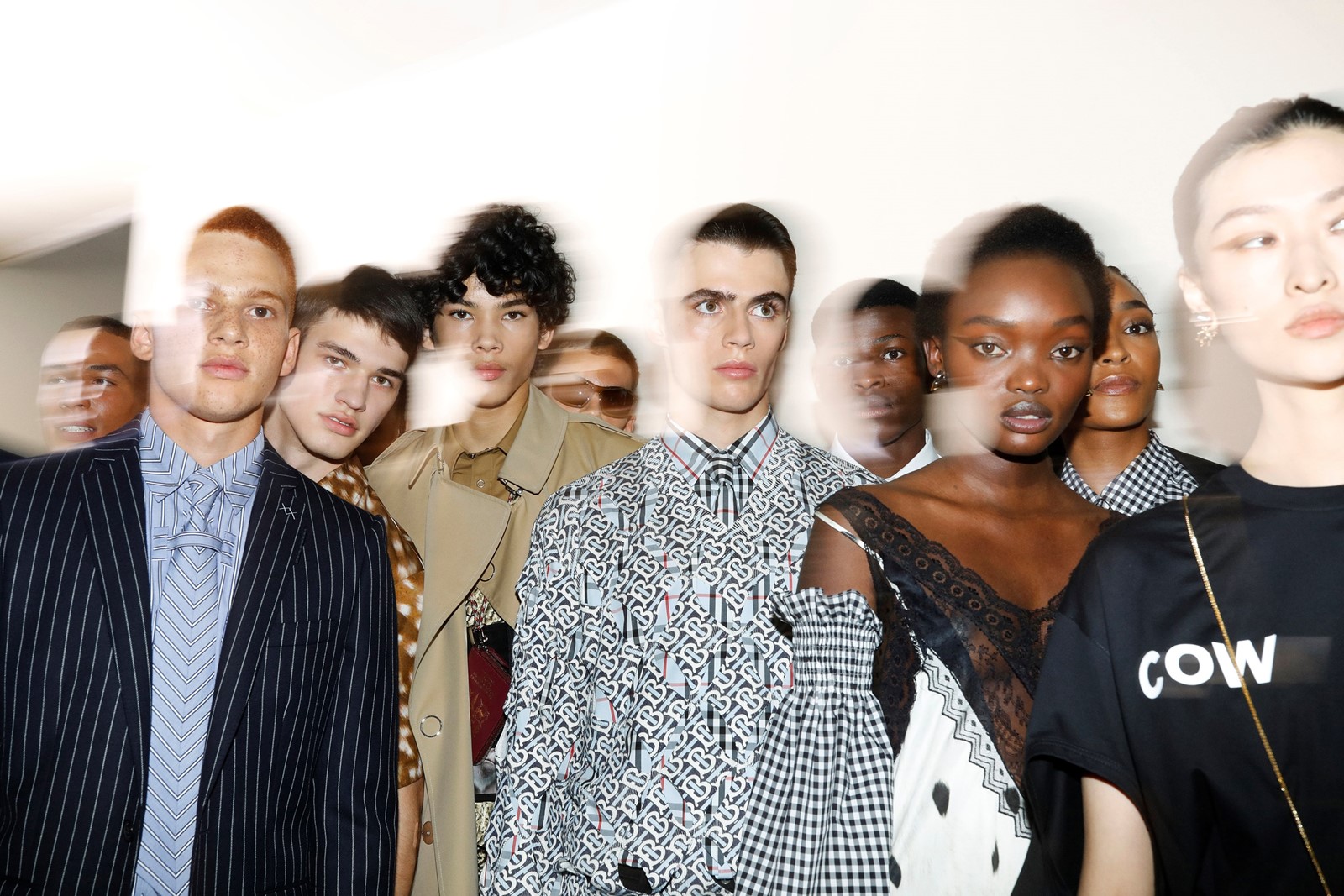
The different sections of this show felt like different classes of clothes: upper, working. There was no middle, though, it was either sweatsuits or business suits, grit or polish. “Eclecticism” was the word Tisci used, although it could have been tribal – here, the exploration was of the socioeconomic and style tribes of the United Kingdom (“Kingdom” being the title Tisci gave to the show). The opening was purely prim and regal, as befits a label with a royal warrant for both Her Majesty Queen Elizabeth II and His Royal Highness the Prince of Wales. You don’t forget that lightly. It was only after the first queenly parade of models – including the genuinely aristocratic Stella Tennant – made their rounds that the punks began to emerge, in crepe-soled Mary Janes and slashed and sloganed pieces, copy-pasted with snippets of Shakespeare and imagery like teenaged bedroom walls. There were also echoes of the Casuals, the late 70s and early 80s football terrace-focussed subculture steeped in sportswear – less picturesque than punk, but entirely relevant to a new generation where football is a religion and sportswear the everyday wear of its congregants. Not so far from Riccardo Tisci’s religious-tinged prior work (incidentally, those Casuals worshipped Burberry). Their contemporary incarnations will do so again.
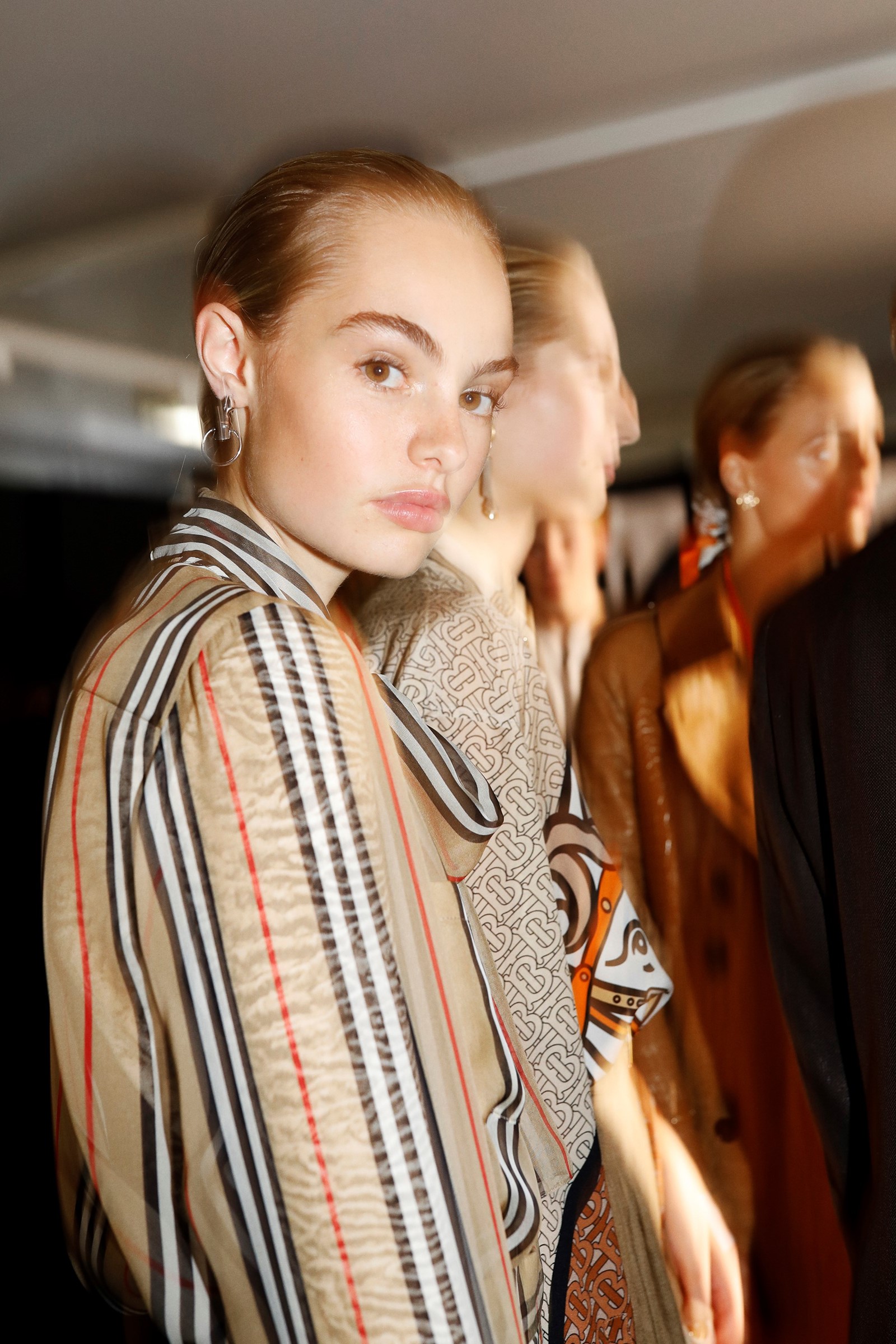

If the brand was founded, like Britain, on class, this show demonstrated class mobility. It melded together codes and classes, marrying opposing sides like dynastic clans to create new clashes and melds. So a crisp, Countryfile trench-coat was pierced with thousands of metal rings, city boy suiting was buckled and strapped with bondage belts, prissy stiletto shoes were stuck with strips of packing tape, and a old bullion fringe trim on an underwear-as-outerwear corset (an ode to Dame Vivienne Westwood, who is collaborating with Tisci on a collection to be launched later this year). It also mimics Tisci’s teenage years, when he would travel to Camden Market to buy secondhand clothes, mixing and matching different eras and styles to create a new hybrid.
It also created a new Burberry. The revised logo, the shop refit, the sell-out T-shirts – all were a precursor to this, the unveiling of Tisci’s initial vision for a revitalised, reengineered brand not only of clothing, but of Britishness itself. It was compelling, arresting, engaging. And eminently desirable. God save the king.
